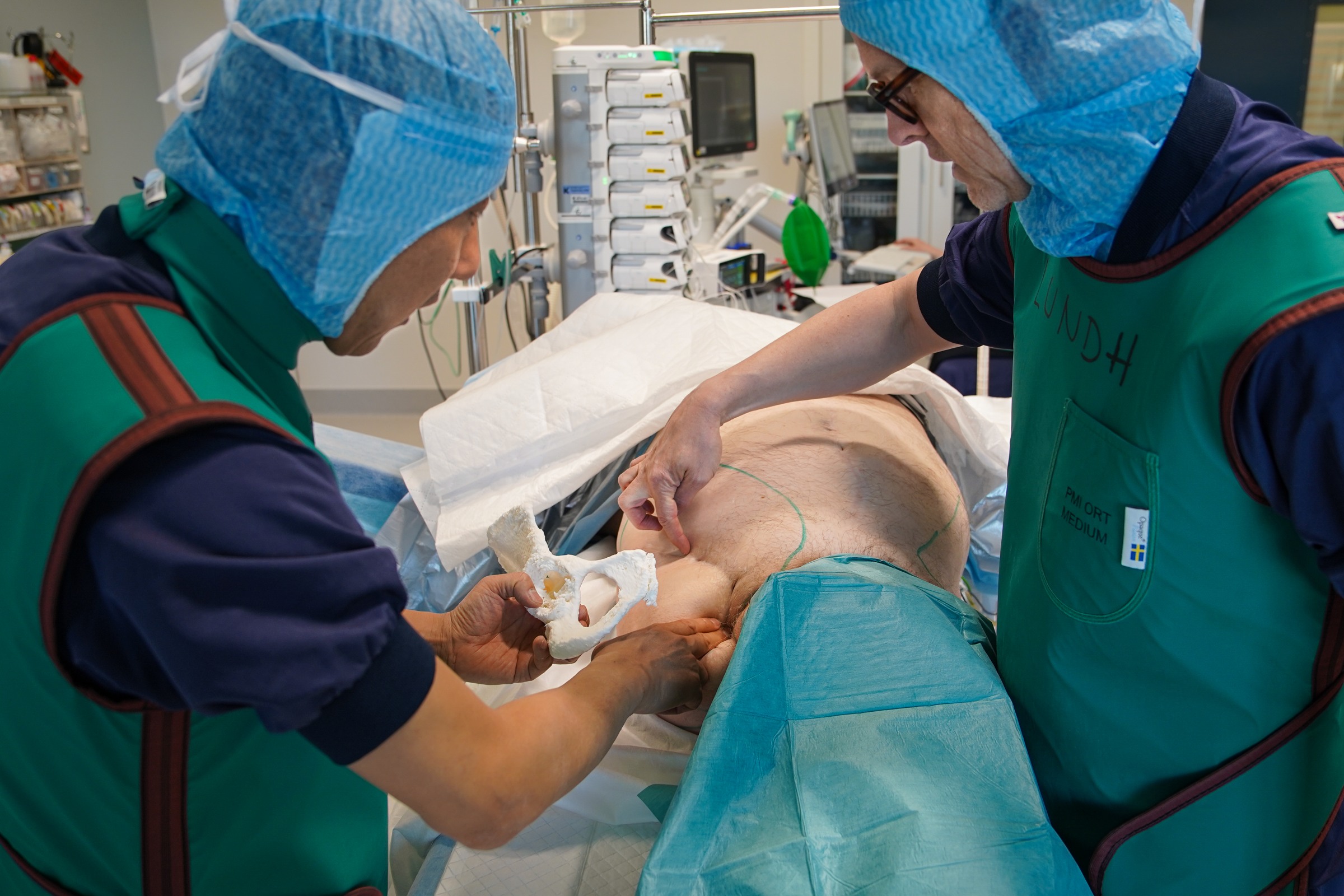Amputation and Osseointegration Center
What is an osseointegrated prosthesis?
Bone-anchored, or osseointegrated, prostheses for the arm and thigh are a Swedish innovation originally developed in Gothenburg. The technique has been used since the 1950s for dental implants, and since the 1990s for arm and leg prostheses.
For arm and leg prostheses, the procedure involves surgically inserting a titanium implant into the bone. Over time, the bone and titanium fuse together. Once the implant is securely anchored, a connector is attached that extends through the skin. The prosthesis can then be attached directly to this connector.
Who can benefit?
We perform surgery on patients with arm or femoral amputations who also have:
- Stump problems related to the socket, such as friction or chafing from the current prosthesis.
- A short or irregularly shaped stump where prosthetic fitting is not possible.
- Bilateral femoral amputations.
Advantages of osseointegrated prostheses
One of the main advantages is that patients no longer need to use a socket prosthesis, which eliminates issues such as skin irritation and chafing. Osseointegration also provides increased mechanical stability and a form of “osseoperception,” enabling the patient to sense the position of the prosthetic limb and improving balance when walking.
Research has shown that osseointegration can increase prosthesis use, extend walking distance, and reduce residual limb pain.
Potential risks
The most common complication is a superficial infection where the skin meets the metal. These infections are usually treated successfully with oral antibiotics, although some patients may experience recurring infections.
In rare cases, deeper infections can occur, sometimes requiring further surgery. In the most severe cases, the titanium implant may need to be removed. The patient would then either undergo revision surgery or continue with a socket prosthesis or no prosthesis at all.
If the implant is overloaded or subjected to trauma, the connector between the bone-anchored implant and the external component may break. This can usually be repaired with a minor surgical procedure.
As with all types of implants, wear and tear occurs over time. Bone-anchored femoral prostheses have been in use since the 1990s, with an expected lifespan of around 20 years. After this, revision surgery is typically needed to replace the system, or the patient can return to using a socket prosthesis.
